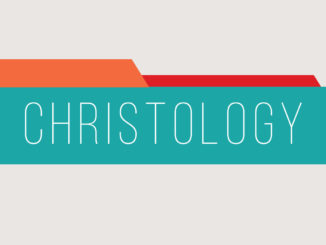
The term “church” is built from the Greek word ekklesia, meaning assembly. Context informs us when it is an assembly of believers versus a gathering of people. The church is an assembly of baptized believers (Acts 2:42-46) committed to Christ to fulfill His great commission (Matthew 28:18-20). At salvation, the Holy Spirit placed us within the “body of Christ” (1 Corinthians 12:13). The supernatural conversion of the one who puts their faith in Christ is exhibited in an ekklesia. A verbal confession and public baptism are the Biblical mandates of those who identify with Christ. Unlike Spirit baptism,
Scriptural Support of the Church
There are over 100 direct references, along with hundreds of indirect references to the church in the New Testament.
Christ’s claims concerning His church:
- I will build my church. (Matthew 16:18)
- The gates of Hell will not prevail against it (gates are defensive). (Matthew 16:18)
- My church is to practice discipline on non-repentant members. (Matthew 18:17)
- I am fully aware of your works. (Revelation 2-3)
The teachings of the Apostles about the church:
- The church experienced supernatural growth (Acts 2:41-47)
- The church witnessed divine discipline that involved death (Acts 5:1-11)
- The church endured severe persecution (Acts 8:1-3, 12:1)
- The church sent out the first missionaries (Acts 13:1-3)
- The church had numerous challenges within and without (1 Cor. and Col.)
- Numerous churches received divinely inspired letters.
- Satan places false ministers and members within the church (2 Corinthians 11:12-15)
- Satan seeks to create confusion and conflict within the church (2 Corinthians 2:11, 1 Timothy 5:15)
- The church is to display the glory of God to a fallen world (1 Cor. 10:31)
- The church is given numerous one-another commands (Romans 12:5-13)
- The church is to be supported by the generosity of the membership (2 Corinthians 5:1-8, 9:7)
- The church is to encourage one another through faithful attendance (Hebrews 10:24-25)
- Christ is the chief cornerstone of the Church (Ephesians 2:19-22)
- Christ is the head of the church and is to have preeminence (Colossians 1:18)
- Christ is actively sanctifying His church (Ephesians 5:25-27)
- Christ will spend eternity with His church (Revelation 4, 21-22)
Historical Perspective of the Church
Christ established the church during His ministry (Matthew 16 & 18), or it began at Pentecost (Acts 2). Fascinating details surrounding the early church are in the New Testament. We have writings from the apostolic and church fathers as to how the early church navigated through cultural and governmental challenges. Throughout history, councils and confessions of faith countered false teachings and clarified sound doctrine. Historians recorded particular events of the church. Their writings, though invaluable, could never capture all God’s church has accomplished and experienced over the last two millenniums. The church’s influence on our world cannot be fully comprehended on this side of Heaven.
Practical Application of the Church
Both doctrine and practice determine a church. Scripture explains the church both in terms of form and function.
- Acknowledge and submit to Christ as the supreme head (Eph. 1:22).
- Embrace Scripture as the final authority for faith and practice (John 17:17).
- Confess that salvation is found exclusively within the finished work of Jesus Christ by faith alone and grace alone (Ephesians 2:8-10).
- Pursue our Lord’s Commission in making disciples (Matthew 28:18-20).
Any “church” that deviates outside these boundaries should be recognized accurately as a religious society and not a “church.” The first-century church had the following distinctions. They met together for corporate worship on the first day of the week. They participated in the Lord’s Supper and church discipline. They were very generous with their possessions. They exhibited love by their forbearance, forgiveness, and service to one another. They shared the gospel to those on the outside. They had spiritual leaders who equipped the membership for service to edify the body towards unity and spiritual maturity. Every ekklesia has the autonomy to apply them differently, but the model should not be dismissed or minimized.
Christ designed the church, loved the church, and will spend eternity with his church. This should motivate every believer to embrace a love for His church.
Click here to read the Introduction to the series, Why Study Theology
Click here to read part one of Rooted: An Introduction to Systematic Theology, Bibliology
Click here to read part two of Rooted: An Introduction to Systematic Theology, Theology Proper (available October 29, 2019)
Click here to read part four of Rooted: An Introduction to Systematic Theology, Pneumatology (available October 31, 2019)
Click here to read part five of Rooted: An Introduction to Systematic Theology, Angelology (available November 1, 2019)
Click here to read part six of Rooted: An Introduction to Systematic Theology, Ecclesiology (available November 4, 2019)
Click here to read part seven of Rooted: An Introduction to Systematic Theology, Anthropology (available November 5, 2019)
Click here to read part eight of Rooted: An Introduction to Systematic Theology, Hamartiology (available November 6, 2019)
Click here to read part nine of Rooted: An Introduction to Systematic Theology, Soteriology (available November 7, 2019)
Click here to read part ten of Rooted: An Introduction to Systematic Theology, Eschatology (available November 8, 2019)
Click here to read part eleven of Rooted: An Introduction to Systematic Theology, Dispensationalism (available November 8, 2019)




1 Trackback / Pingback
Comments are closed.